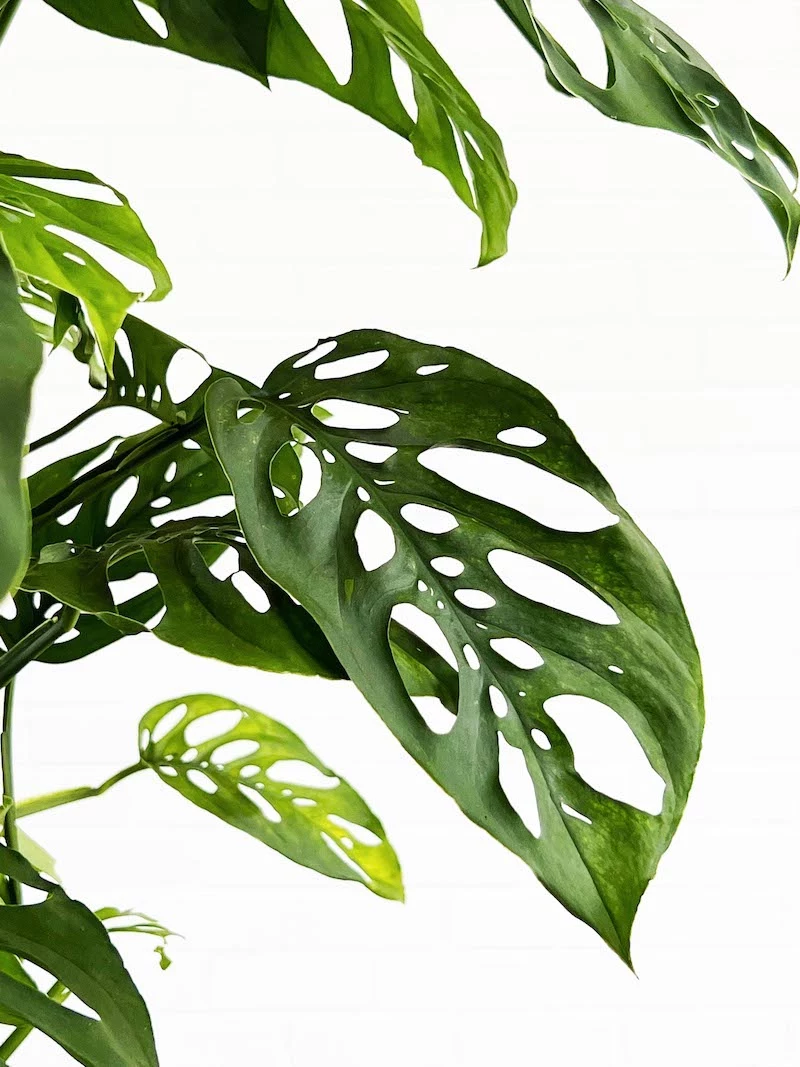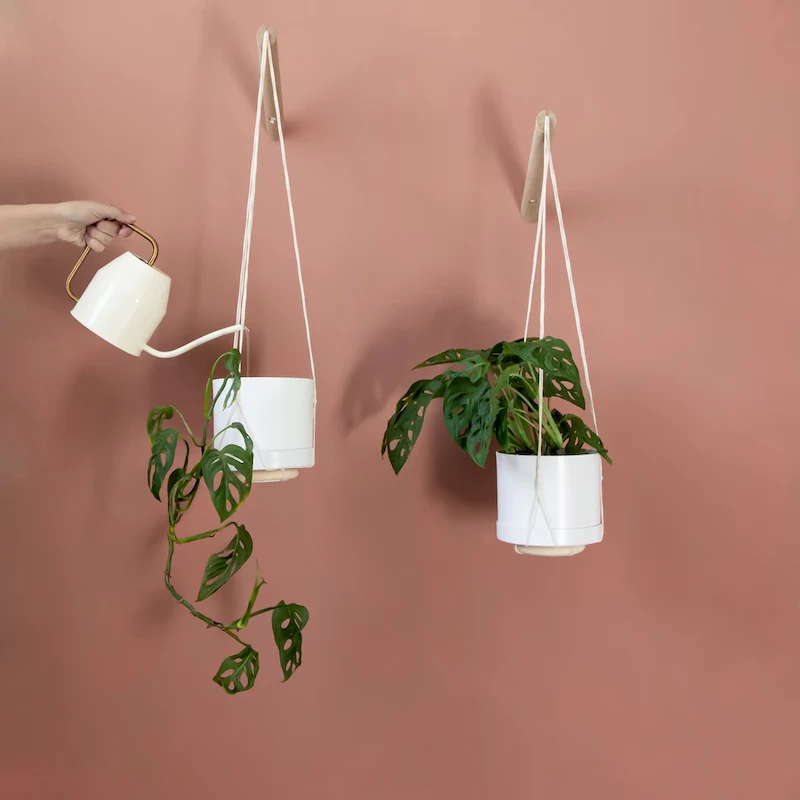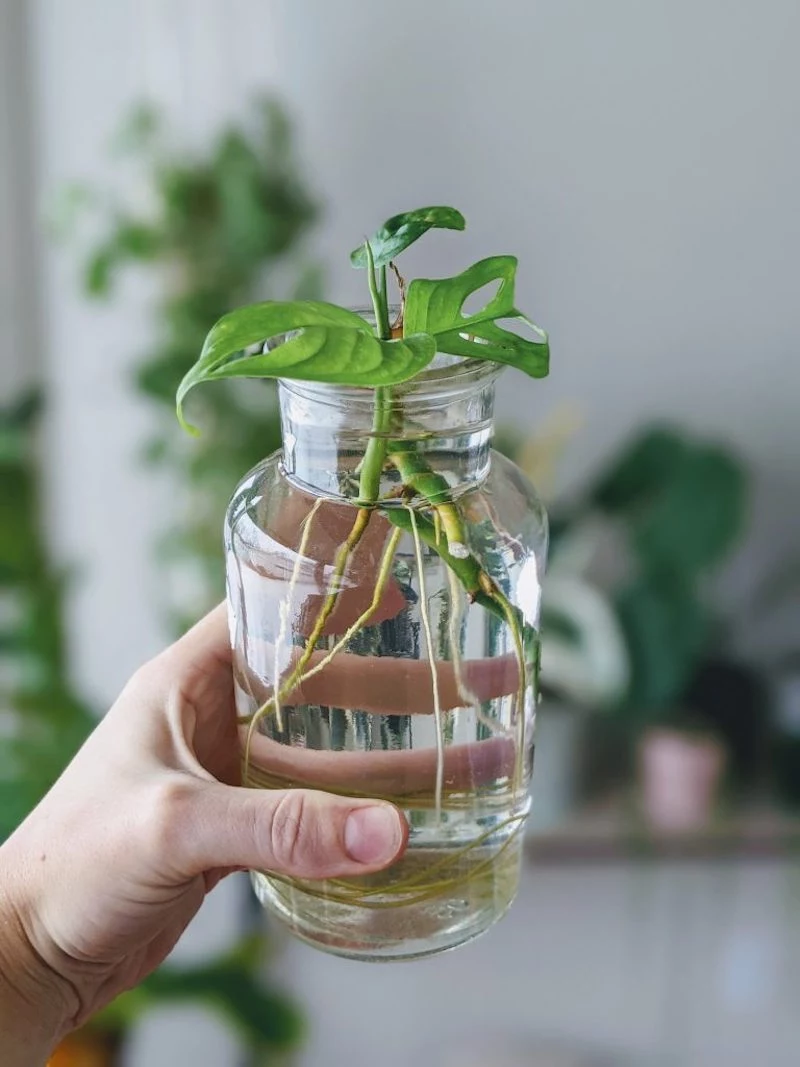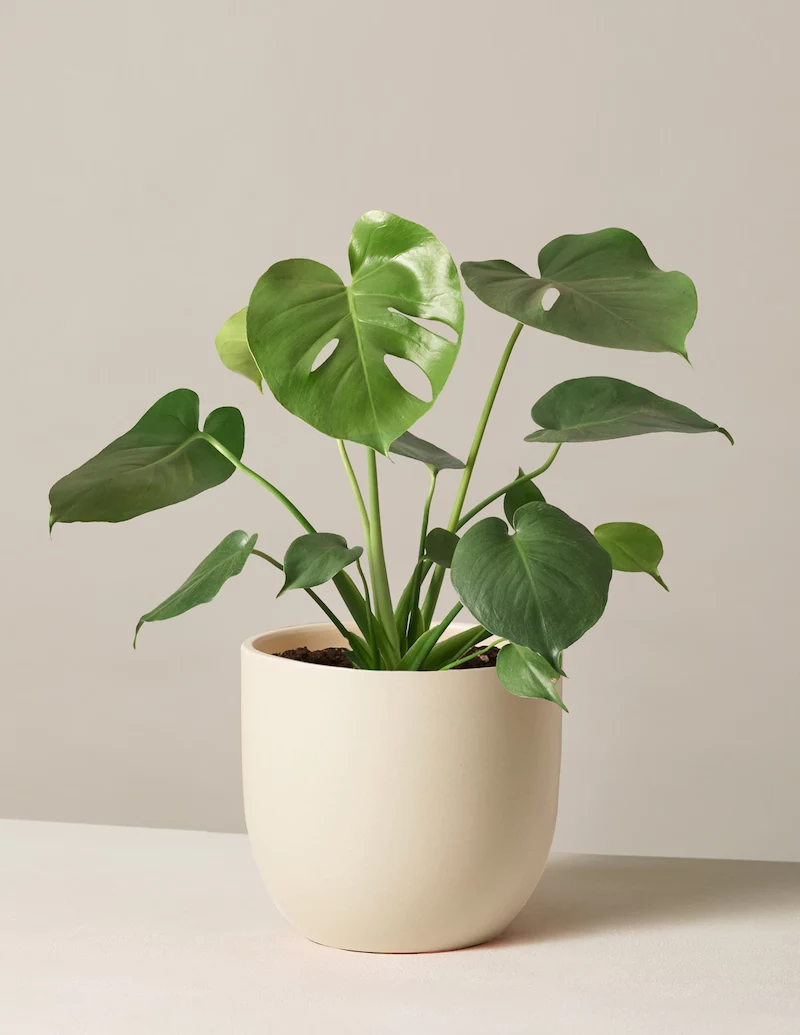Ultimate Monstera Guide: Taking care of a Monstera Adansonii
Monstera “Swiss cheese” gets its name from the large heart-shaped leaves that form holes as the plant ages. Native to Central and South America, it is a tropical perennial. Like its open-leaved cousin, the Monstera, Swiss cheese has a rapid growth rate and vining habit. When grown as a houseplant, these plants can be planted at any time. This plant is extremely easy to weed. The plant has aerial roots growing down from the stem that attaches to the ground, or to another available support. In the wild, it will use these roots to push itself up onto a neighboring tree. When growing it as a houseplant, you can simulate this by placing a stick in the center of its pot. Providing regular water and food will be your main concern for this plant. You may also need to prune it to keep the plant at the size you want. Let’s dive into everything there is to know about the Swiss cheese Monstera Adansonii!
Caution: all parts of the plant are toxic to pets. Here is a list of the best pet-friendly houseplants.
Let’s learn everything there is to know about the Monstera Adansonii
Monstera Adansonii
Monstera Adansonii is often confused – also by vendors – with Monstera Obliqua, i.e., perforate or oblique. Although both have leaves with holes (rather than cuts like the Deliciosa variety), the latter is an extremely rare species both in the wild and in the collections of the world’s finest botanical gardens. So it can be assumed that the monsters sold as must-have species are actually the Adansonii monsters. How do they differ from each other? The leaves of Obliqua Monstera are extremely thin and delicate, moreover, up to 90 percent of their surfaces are covered with holes. The Adansonii leaves are thick and stiff, with holes in about half of their surface. Monsteras are some of the most unique plants you can have!
This Monstera variety has unique leaves
Benefits of the plant Monstera
These are some of the most unique benefits of these beautiful and exotic plants. Remember that your Monstera not only looks good in your apartment, but it also:
- helps to purify the air from harmful impurities
- negatively affects viruses and fungi, inhibits their activity
- saturates the air in the apartment with oxygen and air ions
- promotes ionization and humidification of the air
- with its large spreading leaves, the philodendron not only decorates the surrounding space but is also able to trap dust
Note: If you want to place your houseplants in the bedroom, then find inspiration in this bedroom plant aesthetic list! They will help you sleep better and decorate your room at the same time!
Monstera plants will look amazing in your home
Light
Because of its tropical origin, Monstera Adansonii grows best in bright, indirect sunlight. It is accustomed to thriving under the canopy of large jungle trees, and the leaves can easily burn if exposed to too much sun. If direct sunlight is unavoidable, limit exposure to only two or three hours of the morning sun.
Monsteras love bright, indirect light
Soil
These plants grow best in a peat mixture, which will help trap moisture in the soil without flooding it. For vigorous growth, aim for a soil pH between 5.5 and 7. And, here you can learn how to use used coffee grounds for your plants – super zero waste and sustainable!
Water
These plants like to be consistently moist but not waterlogged. Before watering your plant, stick your finger into the soil about an inch deep. If the soil is almost dry to the touch, it’s time to water the plant. Water until some water runs out of the drainage holes of the pot.
Always know when to water plant and when to wait
Temperature and humidity
These jungle plants thrive in very high humidity and warm temperatures. The closer you can mimic the plant’s natural conditions, the better. Make sure your plant always stays in a location above 40 degrees Fahrenheit, and protect it from drafts. A humidity level above 50% is ideal. A warm, well-lit bathroom is a good place for this plant. If you need to increase humidity, mist the plant or use a humidifier in its space.
Your plant needs high humidity and temperatures
Fertilizer
After planting (or repotting) the plant, wait at least four to six months to fertilize it, as potting mix usually already has a slow-release fertilizer. Then fertilize your Swiss cheese monthly, using an all-purpose liquid fertilizer that has been diluted by half.
Pruning
This plant is a climber, so it may need to be pruned if it starts to outgrow your space. If you must prune the plant, aim to do so in the spring. Use sterile pruning shears to cut the stems by no more than 25 percent. Cut just before the leaf node. Also, remove any dead or damaged leaves if necessary.
Always remove damaged leaves from your plant
Propagation
The easiest method of propagating Swiss cheese is by using stem cuttings. Not only is this an inexpensive way to get new plants, but it allows you to make good use of any stems you remove while pruning. The best time to propagate is in the spring. Here’s how:
- Cut off a 4- to 6-inch piece of stem, cutting right after the leaf node. Remove all the leaves from the bottom third to halfway up the cutting.
- Apply rooting hormone to the cut end.
- Plant the cuttings in a moist potting soil mix in a small container with drainage holes. Place it in a warm location with bright, indirect light.
- Continue to keep the growth slightly moist. You should have well-formed roots after a few months, then you can transfer the cutting to a larger pot.
The easiest method of propagating Swiss cheese is by using stem cuttings
You can also add the cutting to a glass or jar of water
How to grow Monstera Swiss cheese from seed?
To grow Monstera Adansonii from seed, plant them in a shallow tray filled with moistened seed starting mix. Lightly cover the seeds with the growing medium. Place plastic wrap over the tray to trap moisture, and place it in a warm area with bright, indirect light. Spray the growing medium with a spray bottle to keep it slightly moist. The seeds should germinate after a few weeks. Then remove the plastic wrap, but continue to keep the growth moist. The seedlings should be large enough to transplant in a few months.
Growing your plant from a seed is a bit slower, but so worth it!
Repotting the Monstera
Every two years, Monstera Adansonii will probably outgrow its pot. Transplant into a pot a few inches wider and deeper using these simple steps:
- Fill the bottom third of the pot with peat soil.
- Carefully insert a stake to climb up the stem.
- Place the roots in the container. Fill with soil around the roots.
- Securely surround the stake with soil and use plant ties to attach the stem to the stake.
Any container with drainage holes is suitable for this plant. These plants look especially good in hanging baskets. When planting the plant, choose a container that is slightly larger than the plant’s root system. Place it at the same depth as it was in the previous container, using a peat mixture. Plan to repot every two years in a slightly larger container with fresh potting mix. The best time to plant and propagate is in the spring.
You should repot your Monstera every two years
Frequently Asked Questions
Is the Monstera plant poisonous?
All parts of this plant are poisonous due to the presence of Calcium Oxalate. If you have children and animals living in your home, keep the plant away from them.
When is it good to repot Monstera?
Monstera is a plant that grows by about 60 cm per year and needs to be repotted in a new container every 2 years, the repotting itself should be done during the dormant period.
Is Monstera easy to grow in a pot?
Monsteras are easy to grow in a pot, whereas they should be grown in open spaces in a suitable climate.
Now you know how to take care of this special Swiss cheese plant!






















